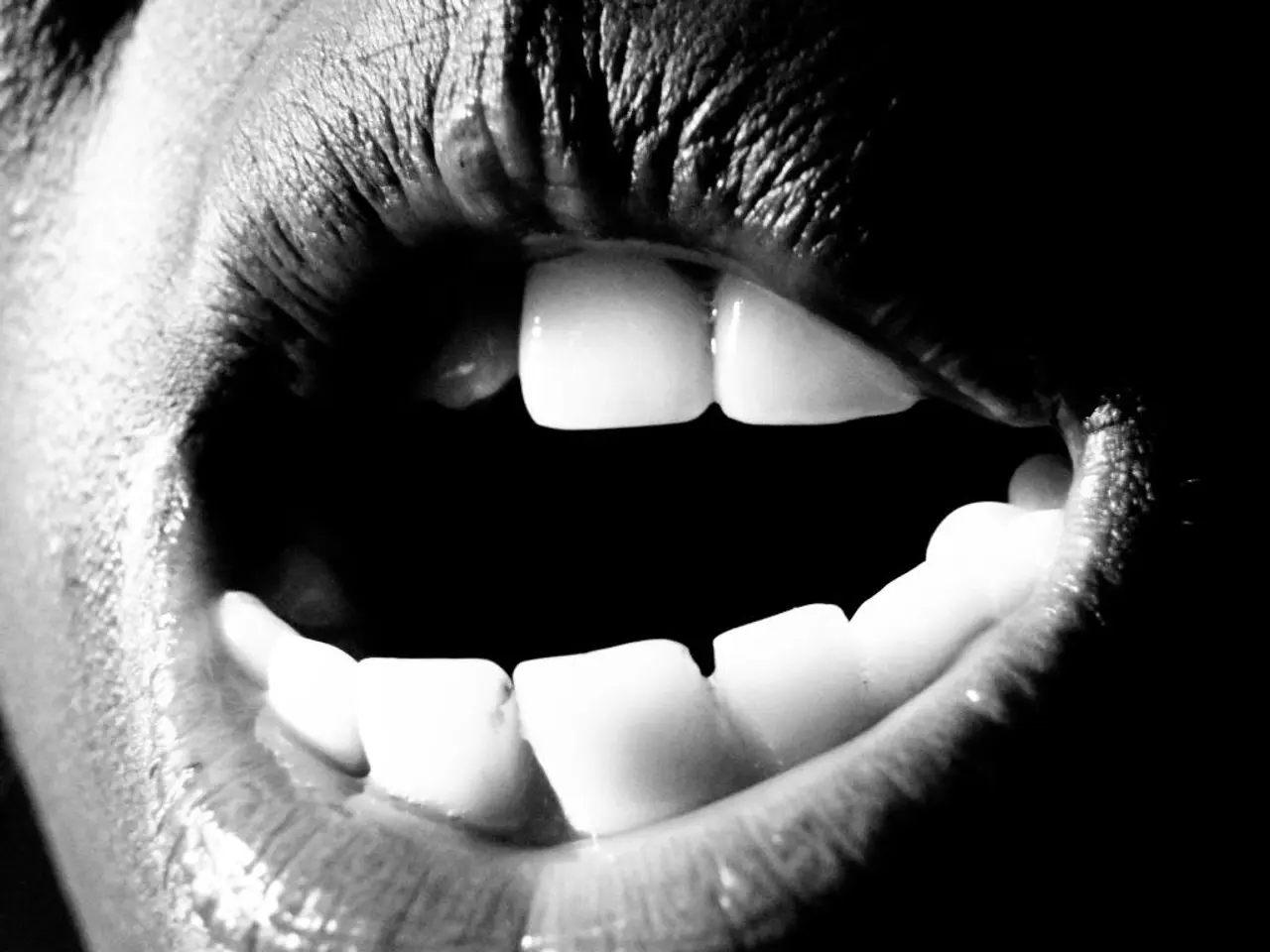Recommended toothbrush pressure for optimal oral hygiene.
In the world of dentistry, maintaining good oral hygiene is paramount. Julia Thome, a renowned dentist from Cologne's Carree Dental, offers her expertise on the correct pressure and technique for brushing teeth to ensure the protection of enamel.
Thome recommends holding the toothbrush at a 45-degree angle to the gums, allowing the bristles to effectively reach both the gum and tooth surface. The ideal pressure for brushing, as suggested by Thome, is between 100 to 150 grams, as measured on a scale. This pressure is comparable to holding a pen lightly.
To further protect enamel, Thome advises using a soft-bristled toothbrush and adopting a gentle brushing technique. The Bass technique, or a similar gentle method, is recommended. This involves placing the toothbrush bristles at a 45-degree angle to the gumline and using small circular or short back-and-forth strokes.
Brushing should last for at least two minutes, ensuring all tooth surfaces (front, back, and chewing surfaces) are covered. Aggressive horizontal scrubbing should be avoided, as it can damage enamel and gums.
Thome also suggests using small, shaking movements to remove plaque and food residue. The final motion, according to Thome, is a wiping motion towards the chewing surface.
It is important to note that fresh plaque is soft and does not require excessive pressure when brushing. Scrubbing too hard can cause damage to teeth over time, potentially leading to gum recession.
An unconventional helper for finding the right pressure while brushing teeth is a kitchen or postal scale. By measuring the force applied during brushing, individuals can ensure they are brushing with the recommended pressure.
It is recommended to replace your toothbrush every 3–4 months or as soon as bristles show wear. Consulting a reliable dental professional or Julia Thome's official communications would be necessary for her precise guidance on brushing techniques.
Science and health-and-wellness intertwine in Julia Thome's recommendations for oral care, as she advises using a kitchen or postal scale to measure the correct brushing pressure, between 100 to 150 grams, comparable to holding a pen lightly. This gentle technique, along with a soft-bristled toothbrush and the Bass method,help protect enamel and maintain good dental health.




